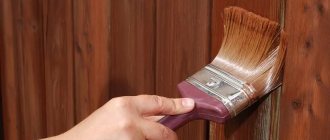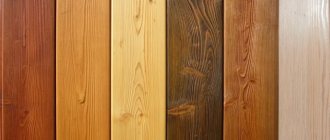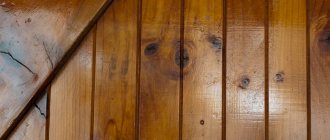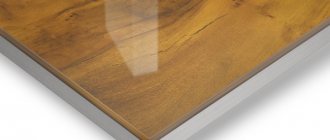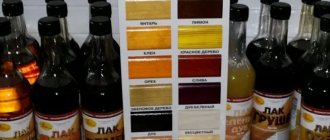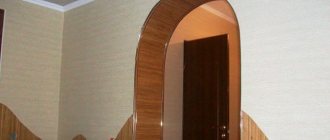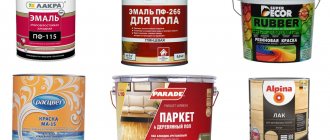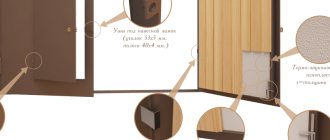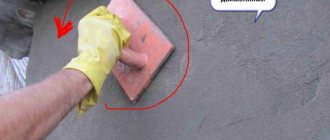Icer
2355 0 0
Icer February 9, 2019Specialization: master in the construction of plasterboard structures, finishing work and laying floor coverings. Installation of door and window units, finishing of facades, installation of electrical, plumbing and heating - I can give detailed advice on all types of work.
Not long ago I decided to update an old but sturdy wooden table. And I was faced with the problem of choosing a varnish - there are many options, but it is not clear how they differ. I have figured out the topic and will tell you about all the types of varnishes that can be used when renovating a table. I will also look at the process of updating the design at home.
The lacquered table looks luxurious
Features of wood
The features are:
- Environmental friendliness . Wood is a natural, renewable material that does not have a negative impact on the environment. Moreover, wooden furniture improves the indoor microclimate.
- Aesthetic appeal . Wood has a unique structure, and each species has its own structure. Using varnish, we emphasize the beauty of the material, and through shades we can highlight the beauty of the material in the best possible light.
- Wood has a porous structure . If you do not treat it in any way, then dirt accumulates on the surface and moisture penetrates, destroying the material from the inside. The varnish serves as a protective barrier and at the same time makes the surface perfectly smooth.
Varnish protects wood from adverse influences and makes it more attractive
- The material wears out over time . When using the table, damage and scratches inevitably appear on the surface. But the advantage of the material is that you can update the table without outside help, using a minimal set of tools.
- Wood species vary in hardness . Soft options are easy to process, but not very durable; hard ones are less processed, but are better able to resist damage. Give preference to oak - it is very hard and is not afraid of moisture, which is an ideal combination of qualities for use on a tabletop.
Oak wood is easy to recognize by its characteristic texture
How to protect a wooden table
There are three main options:
| Illustration | Description |
| Special oil . The wood is impregnated with it over the entire surface. The composition penetrates deeply into the structure of the material, providing protective properties. Next, the surface needs to be polished with wax to make it smooth and fill all the pores. The end result looks good, but the polishing requires periodic updating, which is not very convenient. | |
| Painting the table . A popular solution that is simple: the surface is sanded and, if necessary, puttied. Some people pre-apply primer to the wood for the best effect and to strengthen the material. The disadvantage of this solution is that the paint hides the texture of the wood and the result is ordinary, plain furniture. | |
| Applying varnish . If you do not want to hide the beauty of the wood, then the table needs to be varnished. This process is not complicated; the surface is sanded and leveled, after which varnish is applied. To make the layer stronger and more wear-resistant, it is recommended to treat the surface in 2-3 layers. |
Ways to protect wooden surfaces
Every day, kitchen working surfaces are exposed to various liquids, mechanical stress, and are exposed to high air humidity. To extend the service life of furniture, it must be protected with a special compound. Today, in order to protect wooden products, the following methods are used:
- The surface is treated with a special oil, it penetrates deeply into the wood and subsequently prevents swelling when the wood comes into contact with moisture or liquids. High-quality and effective oils for treating wooden tables are the following compositions: Belinda, OSMO TopOil, Adler Lengo, etc. For maximum protection, it is advisable to apply wax mixtures to cover the wooden tabletop. However, wax and oil provide short-lived protection and require renewal from time to time.
- The working surface is treated with a special varnish. You can add tinting pigments to the varnish for a wooden table, allowing you to change the shade of the wood fibers and also make the surface more saturated. Covering a table with a varnish is much easier than treating it with wax or oil.
Benefits of varnish
This type of composition has a number of advantages:
- Reliably protect wood from adverse influences . The composition fills all the pores on the surface and prevents moisture and insects from penetrating into the material. Varnishing makes the surface stronger, and it resists deformation better and is less scratched.
- Varnishing makes the wood texture much more expressive . Color pigments are often added to the varnish; due to this, it can shade the surface or make it lighter. By choosing the optimal effect, you will make the table much more beautiful.
The varnish highlights the wood texture in the most favorable light and makes the surface brighter and more expressive
- Furniture with such a coating lasts much longer . The protective layer extends the service life of the table by at least twice as it is not subject to adverse influences. In addition, you can periodically update the coating and the furniture will always look fresh and neat.
- Caring for a varnished table is much easier . A smooth, glossy film is created on the surface that does not absorb dirt and odors and from which all contaminants can be easily and quickly removed.
The varnished surface is easy to care for
Main types of wood varnish
First, a few words about the functions of furniture paints and varnishes. It is advisable to choose a composition that simultaneously:
- will protect the wooden base of furniture, which is often washed, food is spilled on it, scratched with household items, and heated with hot dishes;
- will improve the appearance of surfaces that are always in sight, maintaining a festive look, shine or velvety matte for a long time;
- will not spoil food, contact of the table surface with food is inevitable, varnish for a wooden tabletop should not contain toxins or other components hazardous to health.
For reference! Paints and varnishes are produced for external and internal work, this is worth taking into account.
Types of varnish coatings used in the production and restoration of wood furniture:
- Alcohol based. When dried, the alcohol evaporates from the composition, the dissolved resin hardens, forms a transparent or translucent layer with a glossy sheen. The varnish reliably protects the table base from moisture and mechanical damage. Pleasantly emphasizes the texture of wood, slightly thickens the natural shade. When purchasing paints and varnishes, pay attention to the concentration of the base; the recommended alcohol strength is 90%; if lower, the protective layer will not be as strong. It is better to cover the countertop with a concentrated mixture.
- Oily. Thick varnish is a mixture of resin, pigment and mineral oil (a petroleum product). It is better to work with such paintwork materials outdoors. When dry, the varnish forms a durable film that is resistant to precipitation, ultraviolet radiation, and “kitchen risk factors.” The downside of the composition is its persistent yellowness, which makes the furniture look old.
- Nitrovarnishes. The basis of the mixture is organic solvents, the film-forming component is cellulose. There are no complaints about the strength or appearance of such coatings, but they are not safe. Organic solvents are too toxic. Harmful components of the mixture will pollute the atmosphere of the room even after the surface layer has completely dried. Due to the persistent odor and toxicity, manufacturers are gradually reducing production volumes of nitro varnish, and demand for it is falling. You should not cover a wooden countertop in the kitchen with this varnish; it is better to choose a safe composition.
- Water-based paints and varnishes. Water-based varnishes are safe and absorb well into wood. Due to acrylic dissolved in water, after drying the varnishes form a durable polymer film that hardens more and more over time, is heat-resistant, and not prone to abrasion. Water-based acrylic varnish is not afraid of water, it is transparent, and does not change color from ultraviolet radiation. Preserves the original wood grain and emphasizes the texture of the countertop.
- Polyurethane mixtures. They are elastic, resistant to cracking, and easy to use - no need to prime the wood. The varnish layer is not afraid of accidental impacts, static and dynamic loads. The paintwork dries quickly and does not emit harmful substances. The coating is safe, retains transparency, does not turn yellow, and looks great. But there are also disadvantages: it is better not to purchase polyurethane varnish for a wooden table; the moisture resistance of the coating is quite low.
Alcohol based varnish
Nitrolac
Water based varnish
Polyurethane varnish for wood Please note: How to varnish MDF?
How to restore a table - we analyze the technology
To update the table, you need to carry out a number of activities:
- Assessing the condition of furniture.
- Preparatory stage - collecting everything you need.
- We remove the old coating.
- Apply wood varnish correctly.
I’ll tell you how to use varnish correctly, and below I’ll analyze each of the stages separately. To get perfect results, remember the following:
- Choose a varnish according to the nature of the table's use . For furniture that is used very often, you should select the most wear-resistant options.
- Don't buy the cheapest formulations . Usually their quality leaves much to be desired, the middle price segment is the optimal solution.
- Be sure to make sure that the varnish has not yet passed its expiration date . Remember a simple rule - the fresher the composition, the better.
- Please read the instructions carefully before use . Each option has its own nuances of use, and to get the perfect result, follow all the manufacturer’s recommendations.
- Apply the varnish with a soft brush in one direction . Stir the mixture periodically so that heavier particles do not settle at the bottom.
The packaging always contains instructions with the correct technology for applying varnish to the surface.
How to properly varnish the wooden top of a kitchen dining table: step-by-step instructions
Before varnishing the dining table top, prepare a brush or roller, stain and primer . When carrying out restoration work, you will need sandpaper and remover to remove the old coating or a grinding machine.
Depending on whether the countertop is new or requires restoration, the following preparatory work is carried out :
- from the restored surface using electrical grinding equipment, a chemical remover or an industrial hair dryer.
- The new countertop is wiped, degreased with acetone, alcohol or copper sulfate, dried, the surface is sanded and the dust is thoroughly wiped off.
When using chemical removers and an industrial hair dryer, the old coating is removed with a rag or spatula. Removers quickly dissolve it and practically do not harm the wood.
Attention! A hairdryer can only remove paint. The high temperature will melt the varnish and become sticky like glue.
For grinding , electric sanding equipment, wire wool and sandpaper of different grain sizes are used. The last two options are used with caution - a washcloth and paper can damage the surface of the tabletop, and when using a grinding machine it is important to distribute the pressure evenly.
Applying varnish
When treating wood with special varnishes, you can add a coloring pigment to change the shade and highlight the wood fibers.
After preparing the countertops, they begin to apply the coating.:
- If the table needs to be given a more saturated color or changed, the surface is pre-treated with stain or colored primer.
- After the color layer has dried, the first layer of varnish is applied. It is better to dilute it with White Spirit in a 1:1 ratio. The result is a liquid composition that is ideally absorbed into the surface. A new brush is used to apply each layer, because its quality deteriorates after washing.
- for the first layer to dry . It is then sanded with fine sandpaper to improve adhesion and a second coat is applied. After 2-3 days, the surface is sanded again.
- After applying the third, final layer, the surface should dry for 3-4 weeks.
Condition assessment and preparatory work
At this stage the following is done:
| Illustration | Description |
| Carefully inspect the table. Assess the condition of the surfaces; if they have deep damage, you will have to use wood putty. Also check the condition of all connections; if they are loose, then first strengthen the structure. Sometimes it makes sense to disassemble the furniture and process all the parts separately. Pine usually has more damage than hardwood, making it more difficult to work with. | |
| Prepare your work area . Since a lot of dust is generated during the grinding process, I advise you to process the table in the garage or outdoors; you should not do this in an apartment. Don’t forget about work clothes and protective equipment - glasses and a respirator will come in handy. | |
Purchase the necessary materials:
| |
The tool you need is the following::
|
Removing old coating
This stage consists of the following work:
| Illustration | Description |
| The work is carried out using a grinder . An abrasive with a P120 grit is applied, and the old paint is carefully removed over the entire surface. It's worth working carefully. If you use a belt sander for straight sections, then a grinder or drill with a special grinding disc is more suitable for ends and corners. | |
| Clean all surfaces that will be coated with varnish . For convenience, the table can be placed on its side or turned over. Assess the condition of the surface; if there are deep scratches or damage, repair them with putty to level the surface to perfect condition. | |
| Finish the table to perfection . It is more convenient to sand all problem and hard-to-reach areas with a block wrapped in fine-grained sandpaper. After finishing work, thoroughly clean all surfaces from dust. |
Applying varnish
Everything is simple here:
| Illustration | Description |
| Apply the first coat of varnish . First, open the jar, mix the contents thoroughly and add solvent if necessary. Apply using even movements along the fibers of the fabric, avoiding smudges and not distributing too much composition. | |
| After the first layer has dried, sand the surface with fine sandpaper . This will improve the adhesion of subsequent layers and remove from the surface all small imperfections and raised lint, which is often found on wooden surfaces when varnishing for the first time. | |
| Apply 2 more layers of varnish . The main thing is to wait until the surface is completely dry before applying the next layer. After finishing work, the table can be used. In my case, it turned out to be an excellent kitchen option that has acquired a second life. |
What to remember
- First of all, select the type of varnish that is suitable for your table.
- Water-based compounds are the safest, but are not durable.
- When carrying out work yourself, it is important to completely remove the old coating.
- The varnish is applied along the wood grain with smooth movements.
Did you like the article? Subscribe to our Yandex.Zen channel
February 9, 2021
Furniture, Finishing materials
If you want to express gratitude, add a clarification or objection, or ask the author something, add a comment or say thank you!
Varnishing rules
Many people are interested in how to properly varnish a tabletop? To do this, it is advisable to use a roller or brush. If a colorless varnish composition is applied in one layer, then it is quite difficult to achieve the desired shade of the coating, so it is better to varnish in several layers.
To obtain a rich shade, you can pre-treat the surface with a colored primer or stain; they can be applied in several layers. After they dry, you can start varnishing. What kind of varnish can be used to coat a pine tabletop? Polyurethane and water-based varnish compositions are suitable, although other varieties can be used, but before doing so, you need to read the instructions to make sure that a particular varnish is compatible with the type of wood.
The varnish solution must be applied in a thin, even layer; drips must not be left. When the first layer has dried, it is advisable to sand it with sandpaper. The dust is then removed and another coat or two of the varnish mixture is applied. About one or two days after applying the final coat, the varnish coating will dry, and the old table will turn into a very attractive, new piece of furniture.
Varnish for a wooden kitchen countertop is selected according to several parameters. Time: Some take a few hours to dry, others take a month to fully cure. Cost: Polyurethane and oil-based coatings can be expensive. Smell: some have an unpleasant odor during operation and drying, for example, alkyd ones, to which White Spirit or Solvent are added as solvents, so it is better to work with them in the fresh air. Water-based acrylic compounds have almost no odor, but dry in about two weeks.
